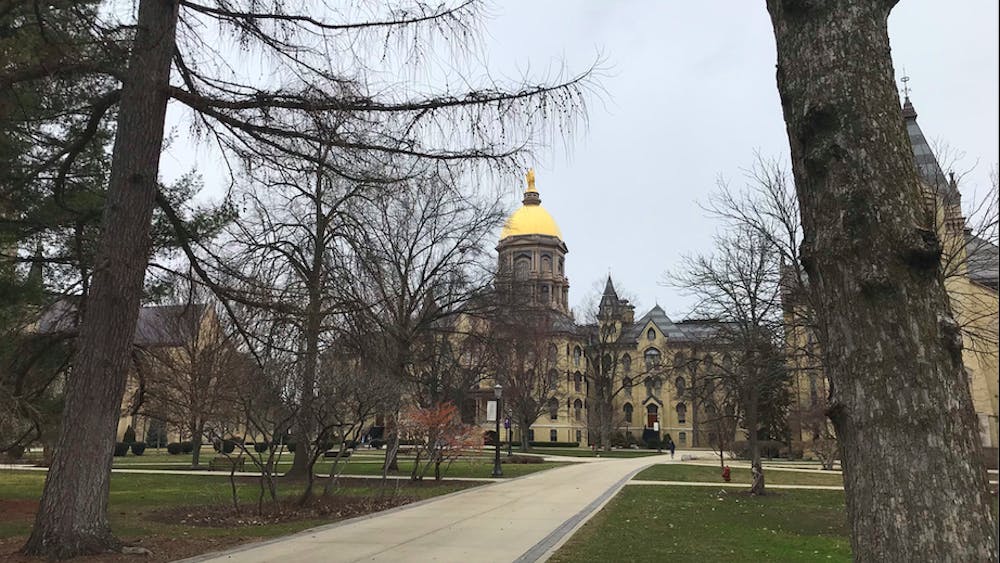Monsoon dripping, trains rattling, “kaali-peeli” cabs making a black and yellow bumblebee blur on the street; throngs of people heading to the beach collectively hoisting a huge icon of an elephant-headed god; nighttime roadside shopping for kebabs and kurtis and weaving through traffic on faded zebra crossings; slums in the shadow of glassy skyscrapers and flyovers.
Watching these realistic scenes of Mumbai, my hometown, in “All We Imagine As Light” on the big screen at the Browning Cinema this weekend felt uncanny — as if India were palpable and all around me in the theater. Even watching it three months ago in a theatre in Mumbai, the film touched me deeply. It reflected the city in a way I’d never seen in Bollywood, maximalist musical numbers traded for moody blue frames and a twinkling piano theme written by an Ethiopian nun. Unlike most Bollywood heroines, the protagonists aren't light-skinned or written exclusively as love interests. And they actually sweat in Mumbai’s humidity.
“All We Imagine As Light,” which won the second highest award at the Cannes Film Festival last year, starts with a roving shot inside the city’s economic engine. The ladies’ compartment of the local train is a microcosm for the whole of Mumbai — sari-clad housewives sit alongside college students with red-streaked hair. Bori Muslims in colorfully patterned “ridas” chat with women chopping vegetables on makeshift cutting boards. And Anu, a young nurse on the way home from work, takes a nap.
Anu and her older roommate Prabha, both nurses originally from the South Indian state of Kerala who’ve come to work in Mumbai, are at the center of “All We Imagine As Light.” Anu has a care free exterior but struggles to make rent each month and worries that her Hindu parents won’t accept her Muslim boyfriend. Prabha is the strong silent type — she had an arranged marriage but her husband, a factory worker in Germany, hasn’t contacted her in over a year. The third protagonist is Parvaty, a widowed cook who works in the hospital with the nurses, who’s being evicted by developers building a high-rise on the site of her apartment building. Over the course of the film, the three women help each other to cope with life in the big city.
Something I love about huge cities like Mumbai is the comfort of being anonymous. But Parvaty’s storyline illustrates that anonymity can be a nightmare for others. Although she is entitled to a new apartment from the developer, she is unable to claim it because she doesn’t have documentation proving that she has lived there for 23 years. She grapples with the idea that her lack of documents erases years of hard work, as if not having papers means you’re not a real person. At the end of the film, Prabha and Anu help Parvaty to move back to the village she’s originally from because she reasoned that no one could kick her out of her home there. Watching the film in the US now made me think of immigrant communities facing ICE raids and immigrants choosing to “self-deport.”
I love how the film fluidly moves between different languages. The intimacy of Anu gossiping to her boyfriend in Malayalam knowing people on the bus won’t understand them and Parvaty and Prabha bridging their cultural divide by speaking Hindi — though it’s a second language for both of them — felt authentic. There’s also documentary-style shots of life in Mumbai accompanied by narrators in different Indian languages (Gujarati, Bhojpuri, Tamil and Bengali) reflecting on both the opportunities and the disillusionment they experienced in the city. The mixing of languages added to the realistic portrayal of Mumbai.
Some of those narrators call Mumbai a “mayanagari” — a city of dreams or, more cynically, a city of illusions. Like a lot of art films, “All We Imagine As Light” ends ambiguously with a scene that could be interpreted as a dream sequence. But despite the unclear ending, its realistic shots, sounds and themes reflect the spirit of this city of illusions with great clarity.










